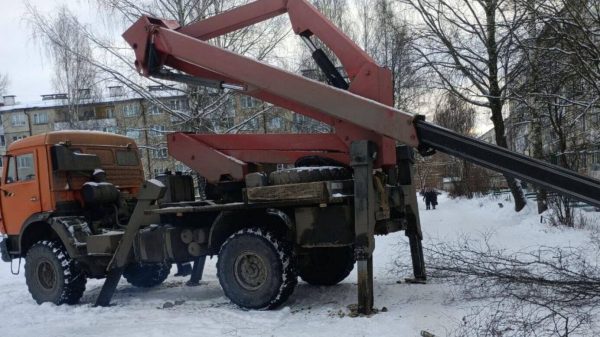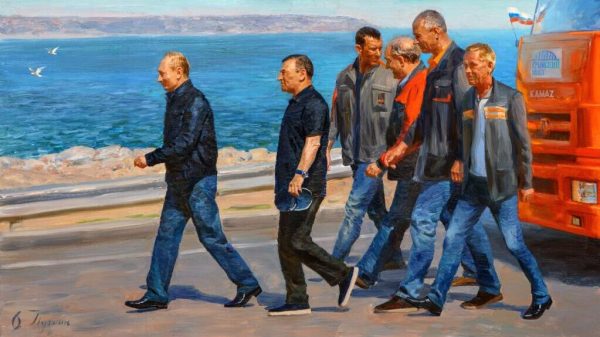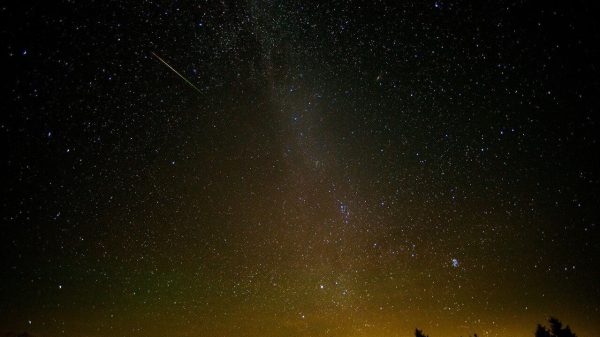A dusty soccer ball lay idle and forgotten a few days ago at an empty dwelling that had been knitted together from billowing, fraying plastic tarps tied to dead trees in the Mexican city of Matamoros.
The vignette of the abandoned shelter is expected to replicate across the makeshift migrant camp in the coming weeks, wedged between the edge of the city and the swirling Rio Grande, across the border from south-east Texas.
‘There isn’t capacity’: Mexican shelters struggle as migrants head north again
Read more
Hundreds have been hovering, somewhere between living and existing, since 2019 under Donald Trump’s program known as “Remain in Mexico” while their immigration cases are processed in the US.
After several 11th-hour delays, people are now starting to depart the camp to argue their asylum cases in the United States.
Nearly 25,000 people out of at least 70,000 who crossed the US-Mexico border and were sent back, under the policy known more formally as the Migrant Protection Protocols (MPP), are now eligible to be reprocessed on the US side.
Joe Biden pledged “more fair, orderly and humane” immigration processes and has ordered the Department of Homeland Security (DHS) to review MPP.
If squalid, dangerous camps in places like Matamoros become obsolete, few will mourn.
The DHS under Trump had said of migrants forced to wait that “Mexico will provide them with all appropriate humanitarian protections for the duration of their stay”.
Yorlene, a 32-year-old Honduran mother traveling with daughters aged 10 and 15, who asked to withhold her full name over security fears, had not found such help when sent back across the border to an area that the state department advises Americans to avoid because of crime and kidnapping.
She had no assistance and at first just stayed on the concrete plaza next to the traffic lanes that lead to and from the international bridge across the river from Matamoros to Brownsville, Texas.
“We lived here,” Yorlene said, pointing to the pavement. “We’d throw something over it and we’d sleep on that. For three months, that’s how I had my daughters living.”
She’s now been waiting for 18 months.
The camp in Matamoros sprouted up over time, as thousands arrived, most fleeing danger, crushing poverty, corruption and violence in Central America.
As donated tents populated the plaza and began spreading into a fenced-off park, migrants were moved away from public sight, closer to the river, in an area frequented by smugglers and drug traffickers.
“Only we know what we’ve seen,” a different Honduran mother, who preferred not to share her name at all, for safety reasons, told the Guardian.
“From bathing in that river as decomposing bodies passed by, without a head, to bathing in the river as dead, decomposing animals passed by,” she said. Others shared similar accounts.
A human body without a head typically indicates someone decapitated by the area drug cartel. A human body still with its head could easily be a migrant who has drowned crossing the Rio Grande.
The woman talked as she sat on a cot in the tent of a camp neighbor, with two other mothers, wearing multiple socks, sweaters and blankets wrapped around their waists late last month, the morning after one of the coldest nights of the year as deadly temperatures engulfed the region.
Fences erected by the Mexican government keep the camp largely cut off from reporters and locals. But a discreet breach in the fence on one side is frequently used by the maña, a term used to describe cartel members, people inside said.
Dangers lurk. Women living with children but especially those living alone, like Iris, 26, who had traveled from El Salvador, remain vigilant after dark.
“It was about 12 at night. Twelve on the dot, because I saw the hour,” Iris said, recalling a mid-February incident at her tent.
Inside Trump’s tent immigration courts that turn away thousands of asylum seekers
Read more
“I heard this little thing, the zipper on the tent, screech,” Iris said. A man, crouched down on the outside of her tent, was trying to get inside, she said.
The night was cold and there was a howling wind.
“‘Ay, Dios mío,’ I said, as I saw him trying to open the zipper. But he couldn’t get it open because I have a small lock on it inside,” she said. She drew her phone under the pile of blankets that lay over her and called her tent neighbor, a man camping a few steps away.
When his phone rang loudly it scared the intruder away. That night, Iris sought safety by moving into the tent of a friend, Dayana, to sleep alongside her and her 10-year-old brother.
Jodi Goodwin, an immigration attorney who began offering legal assistance to migrants from the start of MPP in Matamoros, said it was difficult for migrants to prepare for their court cases without a safe environment and counsel.
Omar Castañeda, a 54-year-old Honduran father of two, told of attending a US immigration hearing, held in a so-called tent court next to the international bridge in Laredo, further west in Texas.
After returning to the Mexican side, he was approached by men he believed were from the cartel operating in that region.
“When we talked to them, they asked for the password,” Castañeda said.
Cartels operating on the border extort money from migrants traveling independently in return for sharing a password that will help them safely navigate through organized crime’s smuggling routes.
“We had to show them our papers … They stand in front of the bridge, and they’re looking at each person who comes in. If you don’t have an explanation for them, they just take you,” Castañeda said.
If you don’t have an explanation for them, they just take you
Omar Castañeda
He said he and his sons had previously been kidnapped. Cartels target migrants and, especially if they find out they have relatives in the US, demand ransom payments.
Attorneys such as Charlene D’Cruz, who represents Castañeda, are hoping that even people who initially lost their asylum cases while waiting in Mexico in fear of their lives will be allowed to enter the US and be reassessed in due course.
“People who have closed cases – they got screwed by a very unjust, cruel system. Why should they suffer any more?” D’Cruz said.
Last week, just a few hours before the first group of 27 migrants from the camp, including Castañeda, were allowed into the US, a jovial atmosphere bloomed.
The sound of singing children floated over the chain-link fence and concertina wire.
Crowds of people who help out at the camp cheered as the 27 were permitted to walk across the bridge into Texas and board a charter bus, heading for another bus journey or a flight to stay with US-based relatives or sponsors until their next court dates.
Where there had been despair and frustration, there were now tears of relief and cautious smiles from those re-entering the US after waiting so long.
Those left behind hope they would be next.
“God knows we’re here, forgotten by the world,” the Honduran woman who told of bodies in the river, said.
She added: “We’re not bad people. We’re humans who can feel, just like you.”
Over the following days, US officials began reprocessing all the families at Matamoros camp, about 700 people, who are eligible, before turning to assess others there and elsewhere in Mexico.
Iris lost her night-time protective tent-mates when Dayana and her family entered the US last Friday.
She felt fresh worry as she faced nights alone again in the camp.
“They’re getting into the tents,” Iris said on Friday night, this time messaging via WhatsApp, of the men who try to sneak in upon sleeping women.
She is currently not eligible to be reprocessed, after US judges denied her asylum claim and appeal when she told of death threats by criminal gangs in El Salvador. She’s not sure what will happen next.
Some days later, Iris said the camp was largely empty, and the few, single women remaining were banding together at night.
Tarps in the camp were left flapping in the breeze at sleeping sites now deserted.
In the few makeshift tents still occupied others endure, wondering when, or even if, their “wait in Mexico” will end.



















































Свежие комментарии